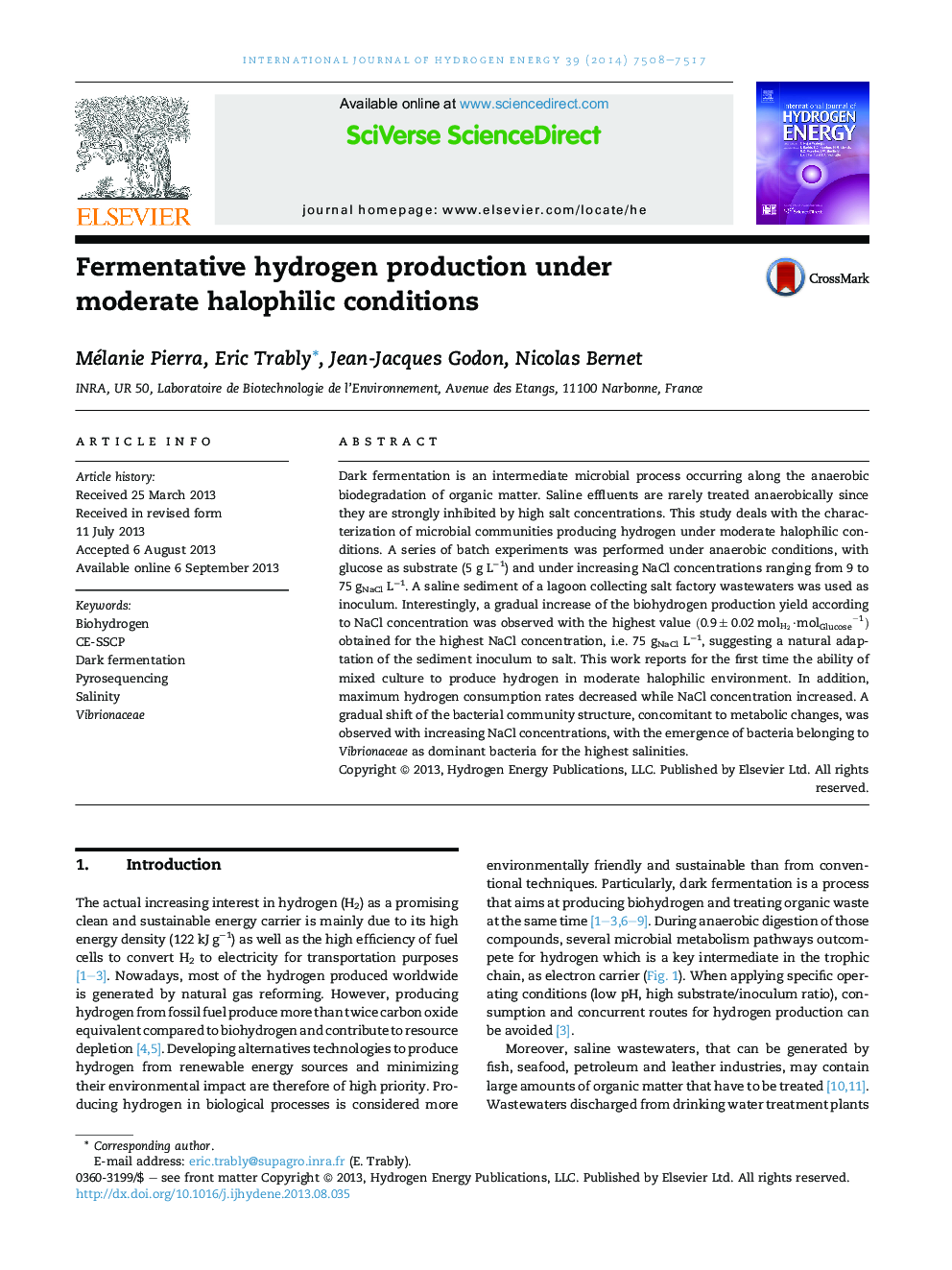| Article ID | Journal | Published Year | Pages | File Type |
|---|---|---|---|---|
| 1272729 | International Journal of Hydrogen Energy | 2014 | 10 Pages |
•First report of H2 fermentative production by moderate halophilic mixed cultures.•Biohydrogen production was observed at high NaCl concentrations.•Inhibition of hydrogen consumption by increasing salinity.•A shift from Clostridiales to Vibrionales as main halotolerant bacteria.•A Vibrionaceae species produced hydrogen under moderate halophilic conditions.
Dark fermentation is an intermediate microbial process occurring along the anaerobic biodegradation of organic matter. Saline effluents are rarely treated anaerobically since they are strongly inhibited by high salt concentrations. This study deals with the characterization of microbial communities producing hydrogen under moderate halophilic conditions. A series of batch experiments was performed under anaerobic conditions, with glucose as substrate (5 g L−1) and under increasing NaCl concentrations ranging from 9 to 75 gNaCl L−1. A saline sediment of a lagoon collecting salt factory wastewaters was used as inoculum. Interestingly, a gradual increase of the biohydrogen production yield according to NaCl concentration was observed with the highest value (0.9±0.02molH2·molGlucose−1) obtained for the highest NaCl concentration, i.e. 75 gNaCl L−1, suggesting a natural adaptation of the sediment inoculum to salt. This work reports for the first time the ability of mixed culture to produce hydrogen in moderate halophilic environment. In addition, maximum hydrogen consumption rates decreased while NaCl concentration increased. A gradual shift of the bacterial community structure, concomitant to metabolic changes, was observed with increasing NaCl concentrations, with the emergence of bacteria belonging to Vibrionaceae as dominant bacteria for the highest salinities.
